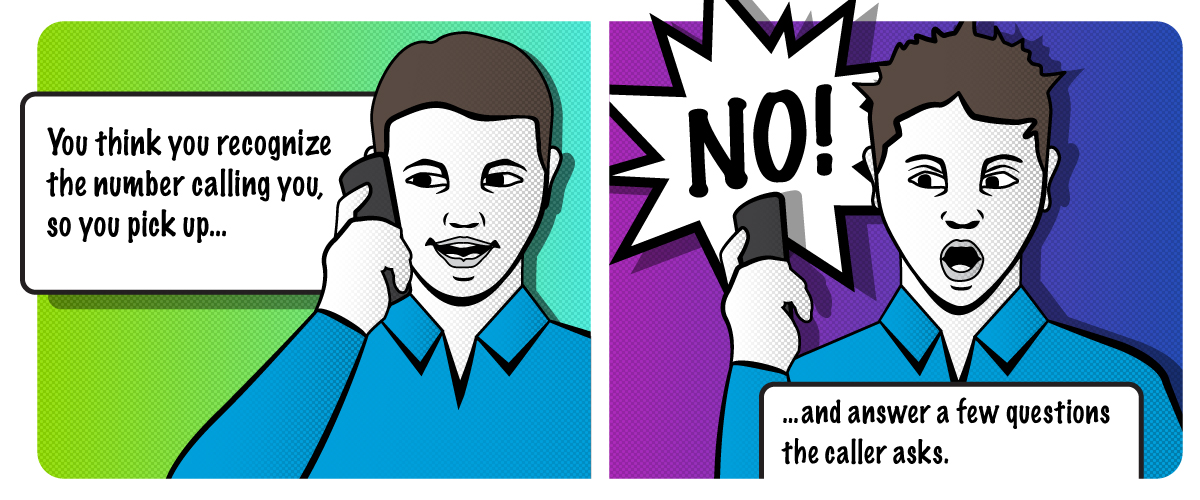It can happen to anyone.
You think you recognize the number calling you, so you pick up and answer a few questions the caller asks. You click the link in a text message thinking it was related to an online order you recently placed. You open an attachment in an email that you thought was from your bank.
And then you realize “Oh no… this looks like a scam.”


Don’t Panic
Bad guys have many convincing ways to trick you. But typically, just opening an email, reading a text message, or answering a call will not allow them access to your device or account.
However, these actions may open you up for more scam attempts, because now they know you exist. You may want to be even more diligent in looking for possible scam messages and calls.
Here are some red flags to watch for if you may have engaged with something or someone suspicious:
- You may notice your device starts to act differently, maybe running slowly or choppy.
- Popups and unfamiliar apps or icons may appear on your device or web browser.
- Accounts may show activity that you didn’t initiate or from areas you didn’t visit.
Act Quickly
If you think that you may have engaged with a scam or you’re afraid your device has been infected, quick action is the most important thing.
- If you clicked on a suspicious link, close your browser quickly. This can prevent malware from completing the installation on your device.
- Hang up a phone call as soon as you get suspicious – whether they called you or you called them.
- If you shared any online account information, change your login ID and password.
- If you shared other account information, such as a credit card number or bank account number, contact your bank or financial institution immediately. Monitor these accounts closely for unauthorized charges and contact the bank or the financial institution to have them reverse any fraudulent charges.
- Run a scan on your computer to identify any suspicious programs or software. Most computers use antivirus software to scan for malware. If it finds potential malware, the best course is to remove or quarantine the file or program. You can run a follow up scan to confirm any threat has been managed.
- Report the bad guys to us so we can take action. You can find ways to report suspicious activities here.
Follow-up Steps
It’s good to regularly scan your device to help protect against potential malware. Most devices will allow you to schedule these security sweeps. You can learn more about this in our device hygiene blog.
Practicing good cyber safety habits can help prevent future issues. You can learn more in these Cyber Aware blogs: